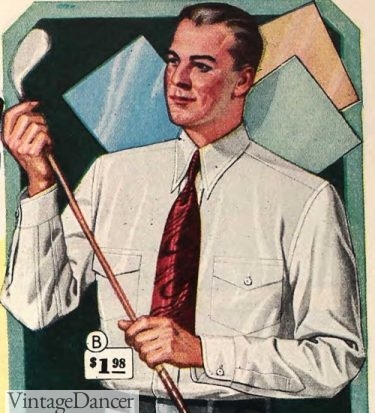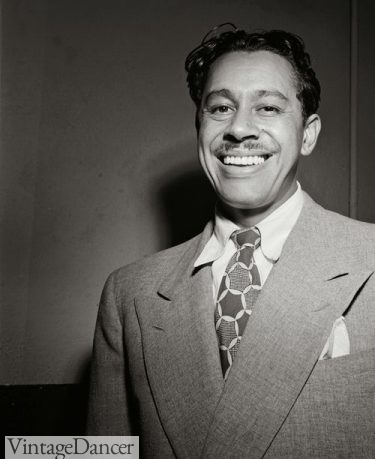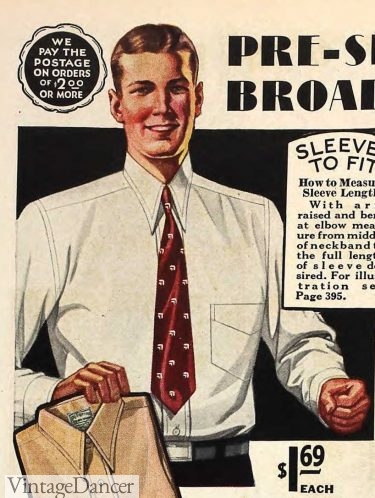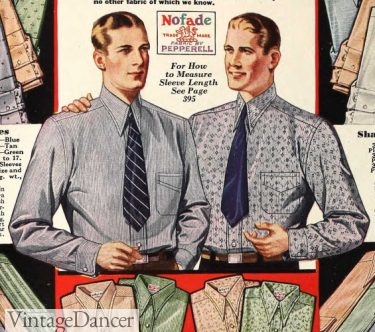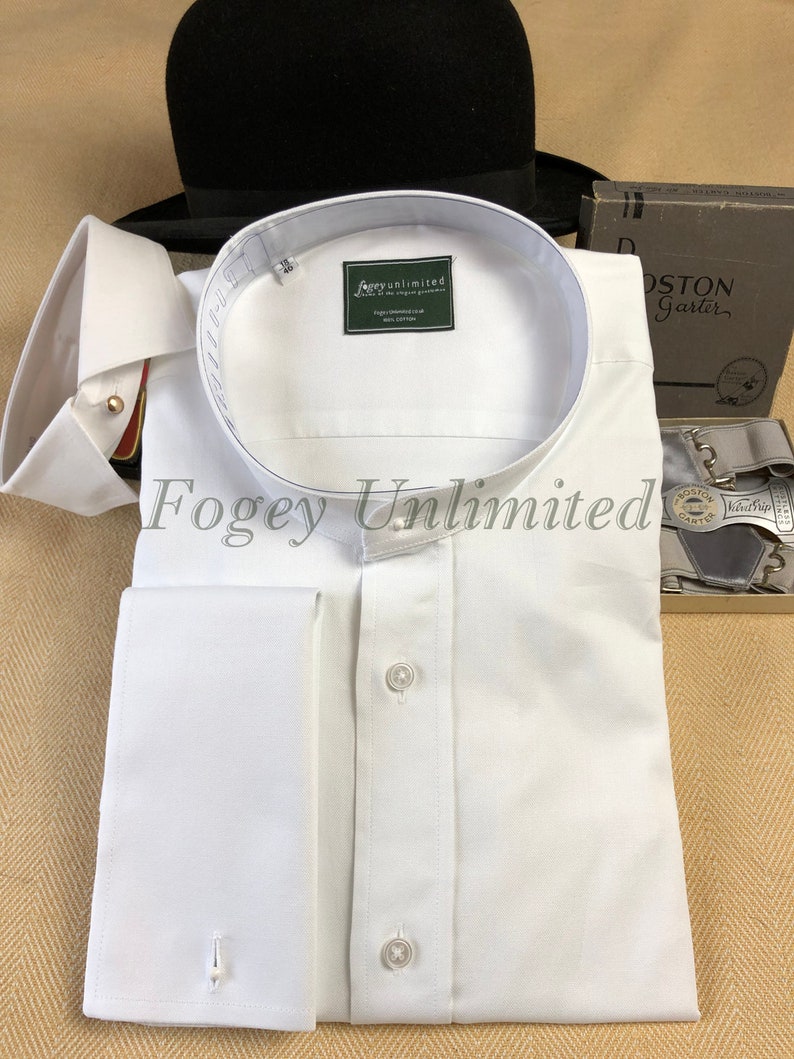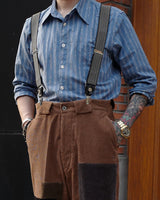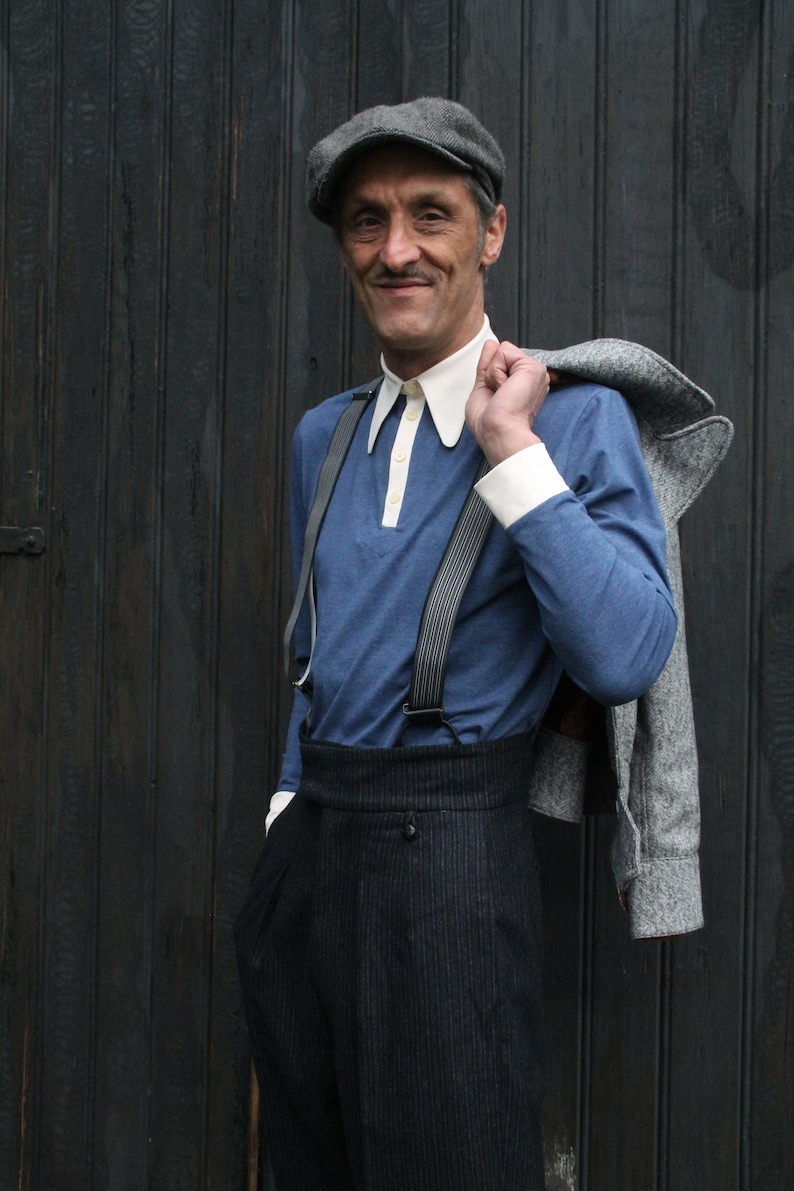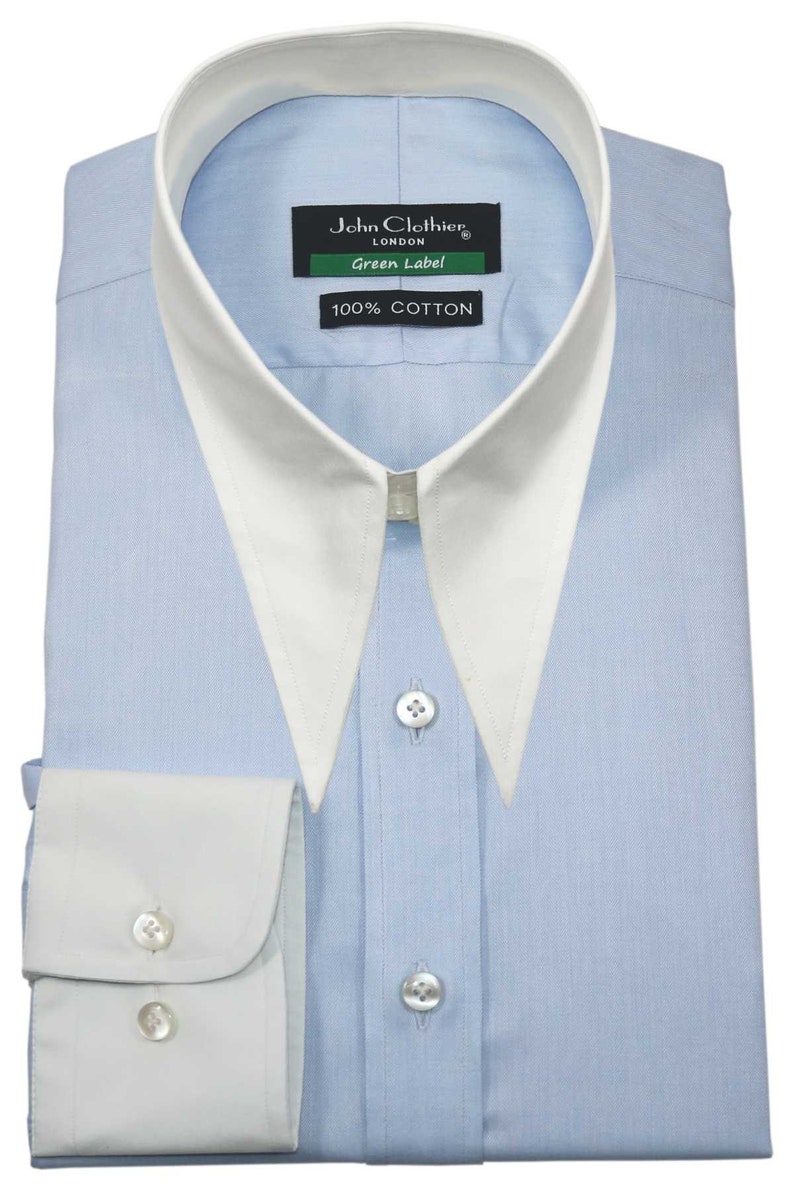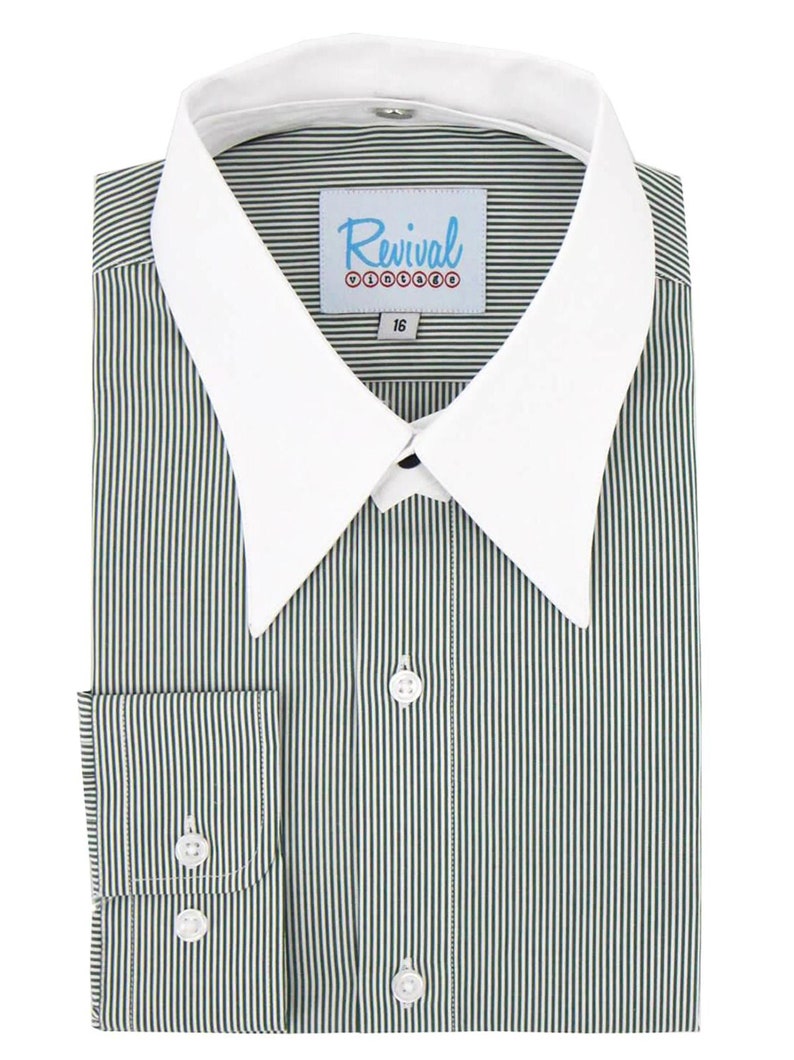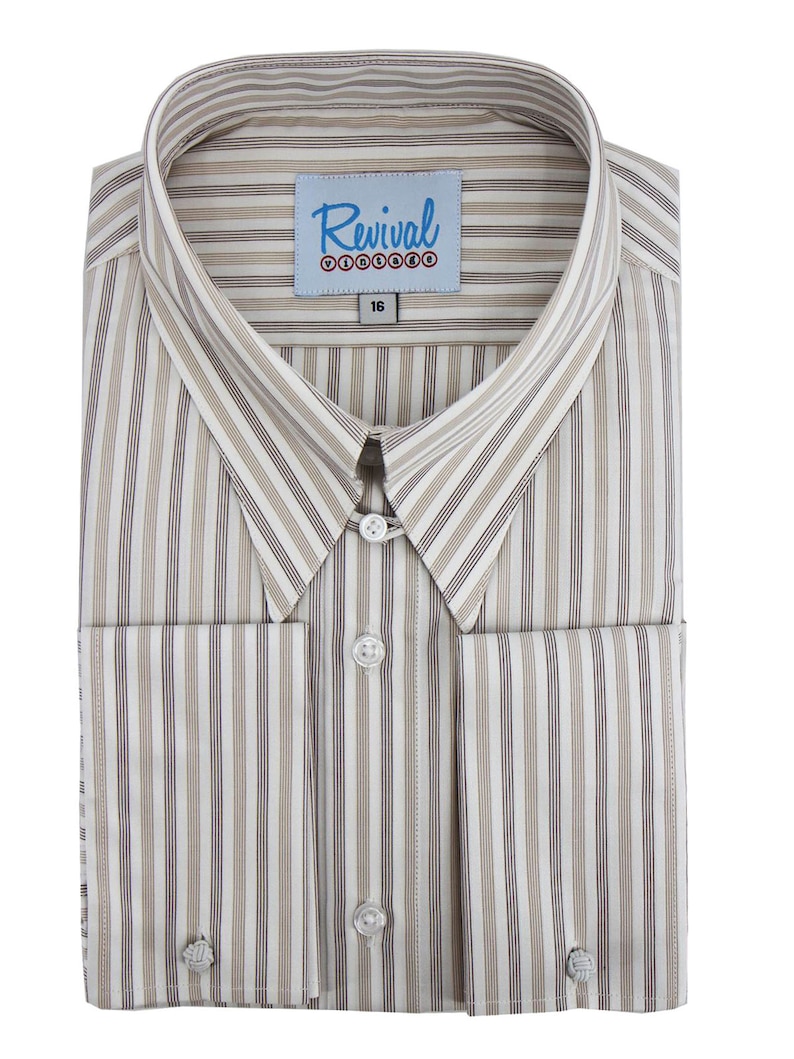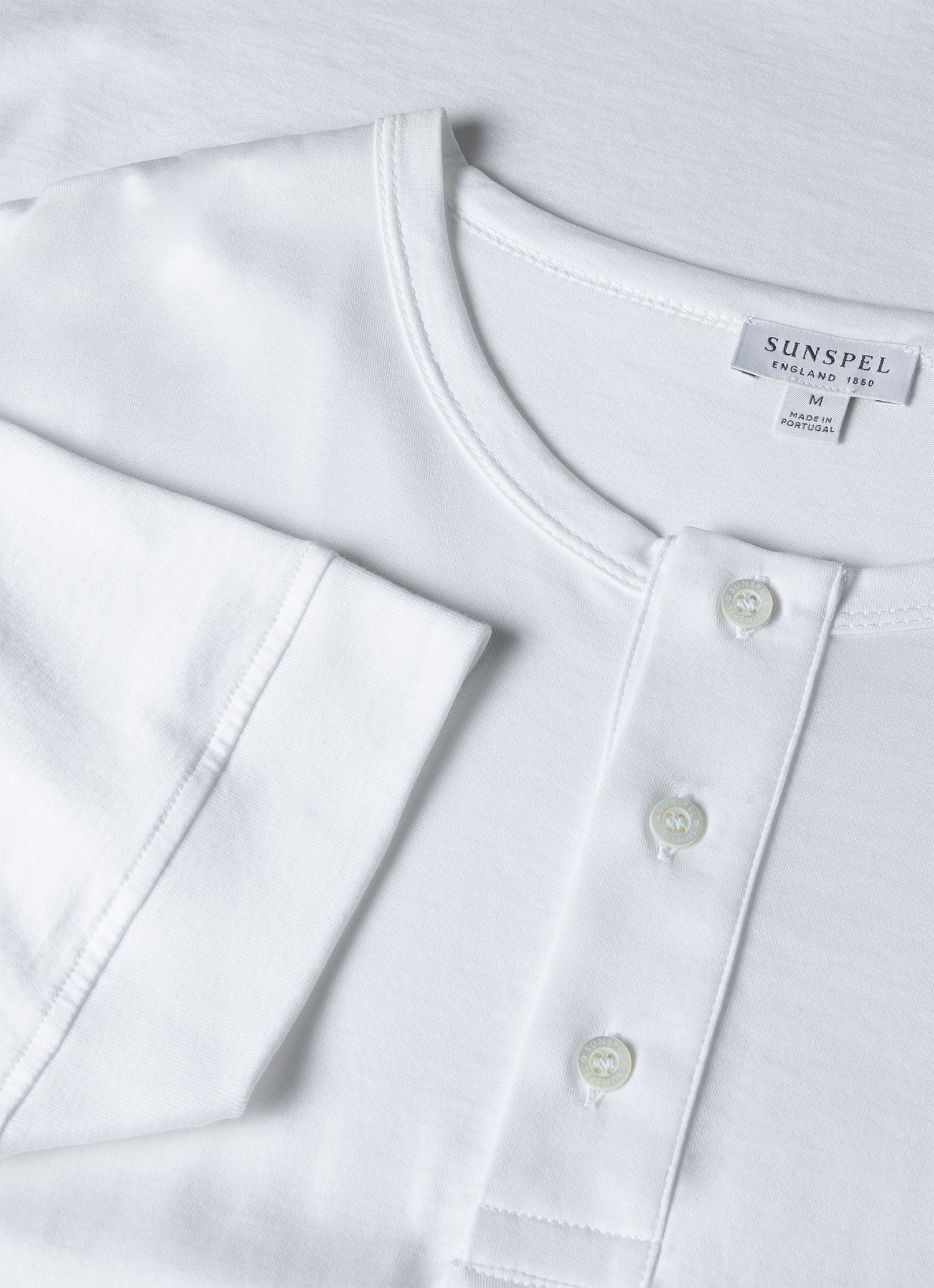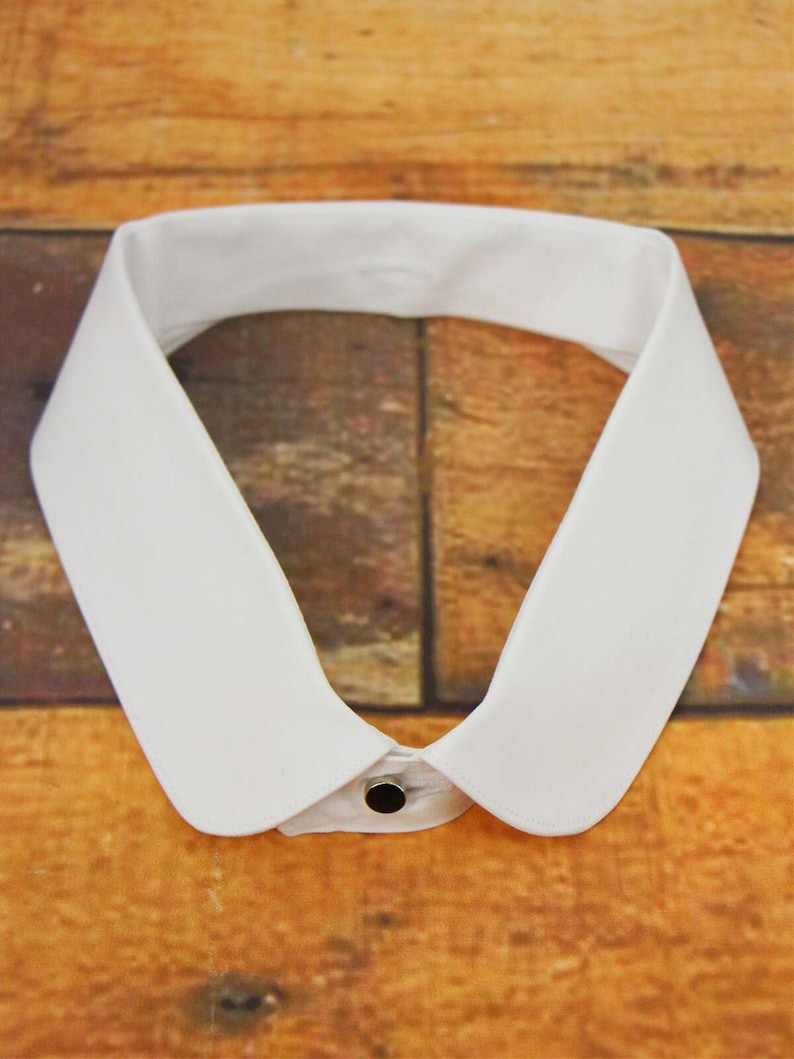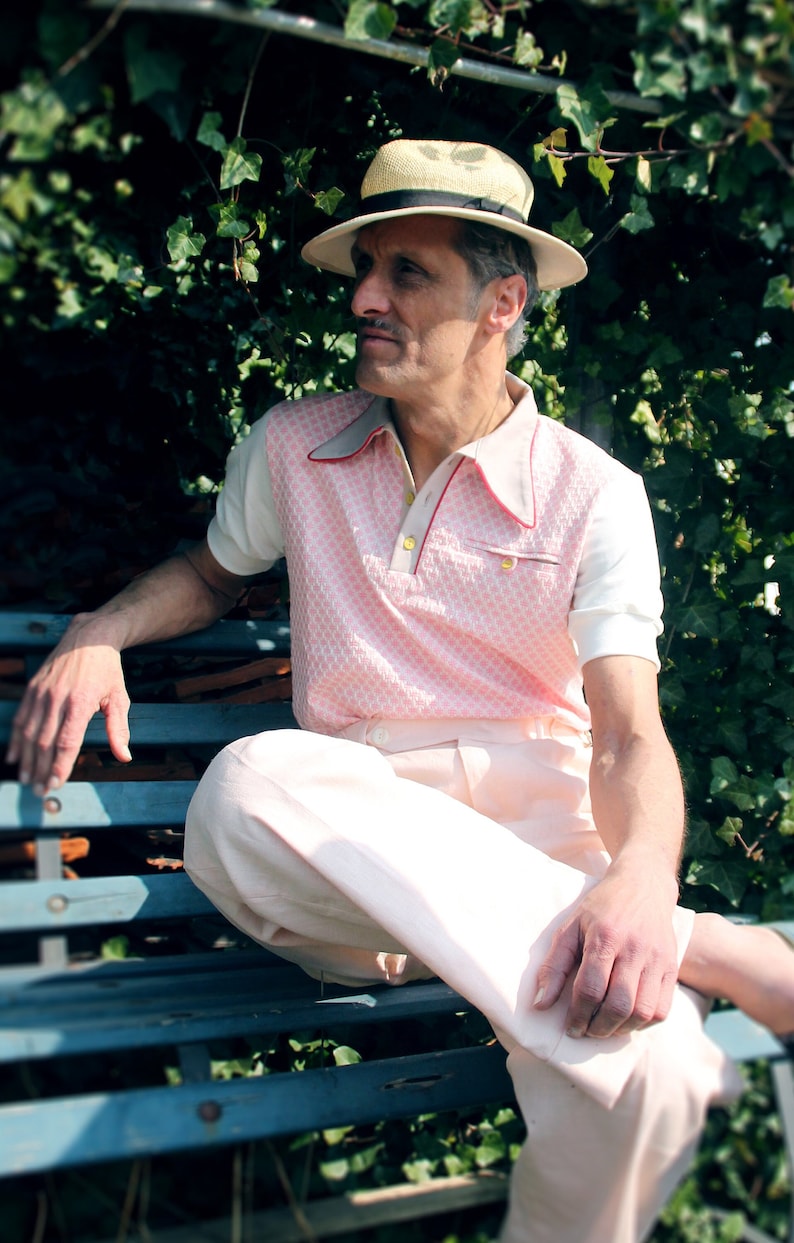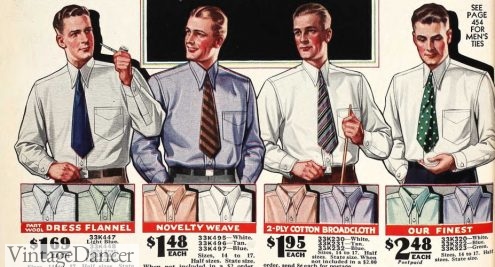
1932 Men’s Basic Cotton Dress Shirts with Spearpoint Collars
1930s Dress Shirts
Men’s 1930s dress shirts were not very different from “classic” men’s shirts today. Thin vertical stripes, windowpane, and small checks were the most common prints on almost any color ground imaginable.
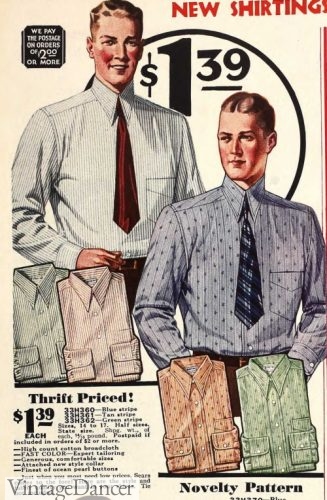
1932 – Thin Stripes and Dot Patterned Shirts with Spearpoint Collars
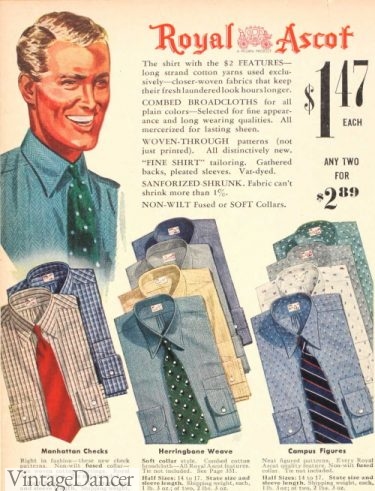
1939 Shirts with Color and Patterns – Checks, Weaves, Small Figures
Common dress shirt colors were saturated green, mustard, blue, burgundy, brown, and grey as well as pastel yellow, rose-pink, ivory, peach, and white. A solid colored shirt paired well with a patterned suit, popular throughout the 1930s.
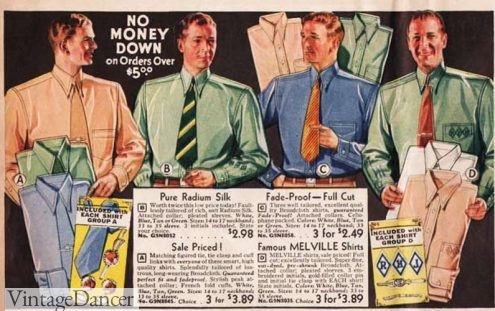
1933 Men’s Solid Color Dress Shirts
Cotton broadcloth with drop stitching made up the bulk of men’s dress and casual shirts. Open weave fabric made shirts breathable in tropical climates, too. Below, the ad lists “crinkle cotton,” “Mesh Weave” mercerized cotton, and “Tropical Oxford cloth” for summer shirts.
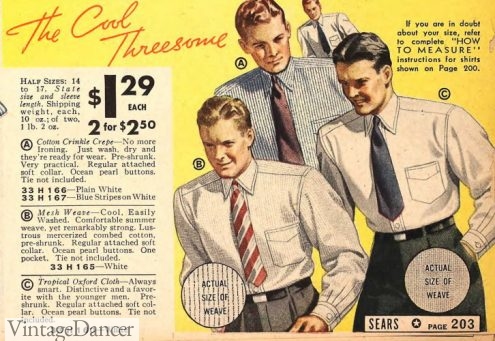
1938 Tropical Open Weave Fabric Dress Shirts
A sponge crepe in deep color tones became another fabric in the late 1930s.
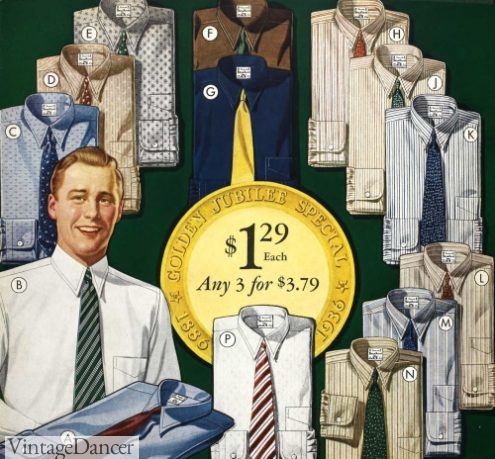
1936 Men’s Shirts
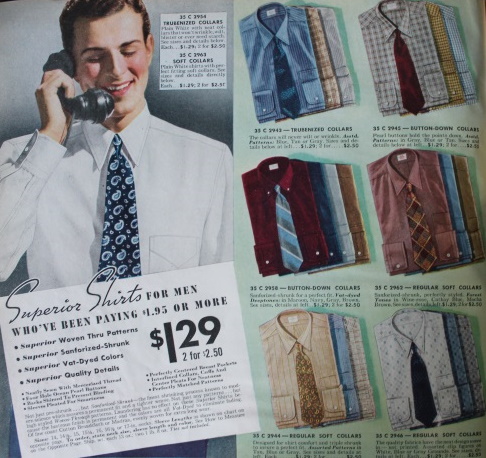
1938 Men’s Shirts
The fad for thin silk striped dress shirts exploded in the late 1930s. All rich-hued silk dress shirts were also extremely popular, as were the cheaper satin-rayon dress shirts.
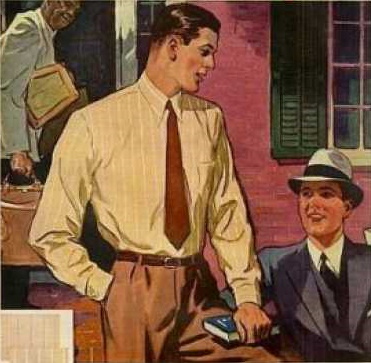
Silk Stripe Shirts
Shirt cuffs were single button cuffs or double French cuffs for the very fancy dresser. Most dress shirts had a single chest pocket that had a stitched-in flap design.
Shirts Collars
Shirt collars were no longer stiff and detachable like they were in the early 1920s. Instead, soft, attached spearpoint collars contrasted with the wide lapels of the suit. Spearpoints or arrow point collars were long and thin, ending in a sharp tip or point. Most collars were 3 or 3.25 inches long, but could extend down to 5 inches.
Clark Gable wore the 4.5 to 5 inch California collar in a few of his movies. Other movie stars wore the wide Windsor collar with a wide knotted Windsor tie.
- 1929 -1930 Spearpoint Collar Shirts with Two Pockets
- Cab Calloway Wears a Spearpoint Collar Shirt
- 1931 White Dress Shirt with Spearpoint Collar
- 1931 Color Patterned Dress Shirts with Spearpoint Collars
The dramatic spearpoint collar went out of style by the mid 1930s. Later collars were still pointed, but a touch wider and shorter.
To combat the curling of soft collar shirts, a new invention emerged. Permanently fused collars with layers of fabric heat sealed with cellulose acetate were top-stitched, keeping collars straight and flat.
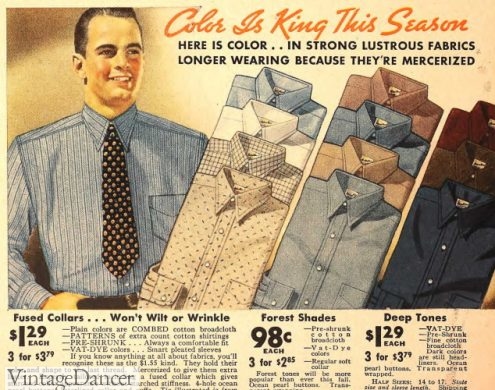
1937 Shirts with “Classic” Point Collars
Many gentlemen turned to using gold collar pins and collar bars to hold soft collars down and keep the tie knot in place. Most collar pins were plain, but some fashioned “sporty” motifs for wearing in casual settings. Some collar bars had chains linking one side to the other with an initial pendant in the center.
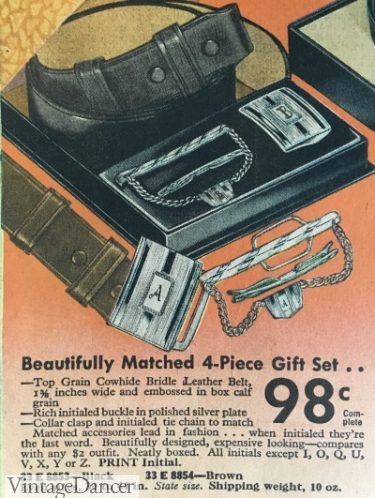
1937 Men’s Collar Bars and Belts
Collar pins were eventually replaced by the button-down collar in the mid-1930s. The pinned collar and button-down collar were short or medium in length, with somewhat wide spacing. A short rounded edge collar was popular between 1935 and 1938 when worn with a small knot four in hand tie.
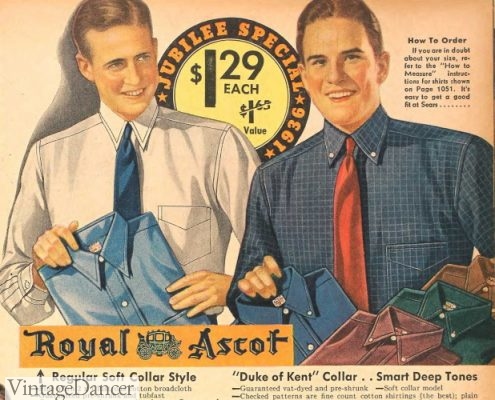
1936 button down collar
Casual Shirts
Sport shirts for casual weekends included the new short sleeve knit shirt- the polo shirt. Knit t-shirts were also becoming trendy at the end of the decade, mostly for playing sports but as casual wear too. Learn more in the 1930s Men’s Casual Fashion article.
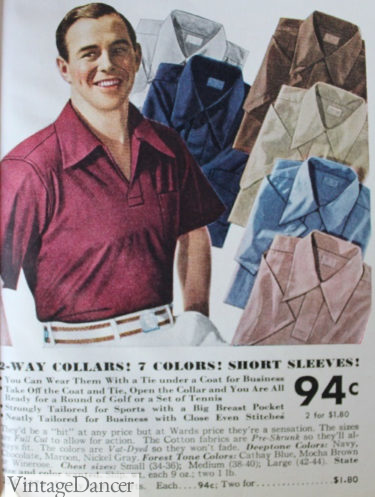
1938 Polo Shirts
For workwear type shirts such as denim or flannel shirts look at 1930s Men’s Workwear, Everyday Clothing
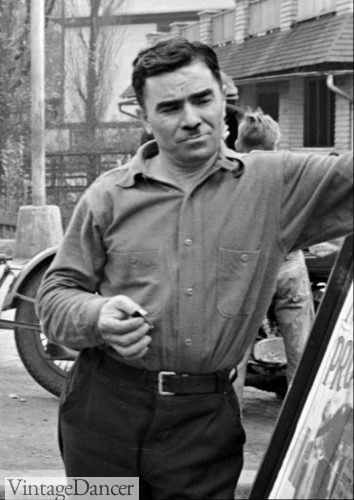
Wool workshirt
Read More
Shop 1930s Style Men’s Shirts
Debbie Sessions has been teaching fashion history and helping people dress for vintage themed events since 2009. She has turned a hobby into VintageDancer.com with hundreds of well researched articles and hand picked links to vintage inspired clothing online. She aims to make dressing accurately (or not) an affordable option for all. Oh, and she dances too.
